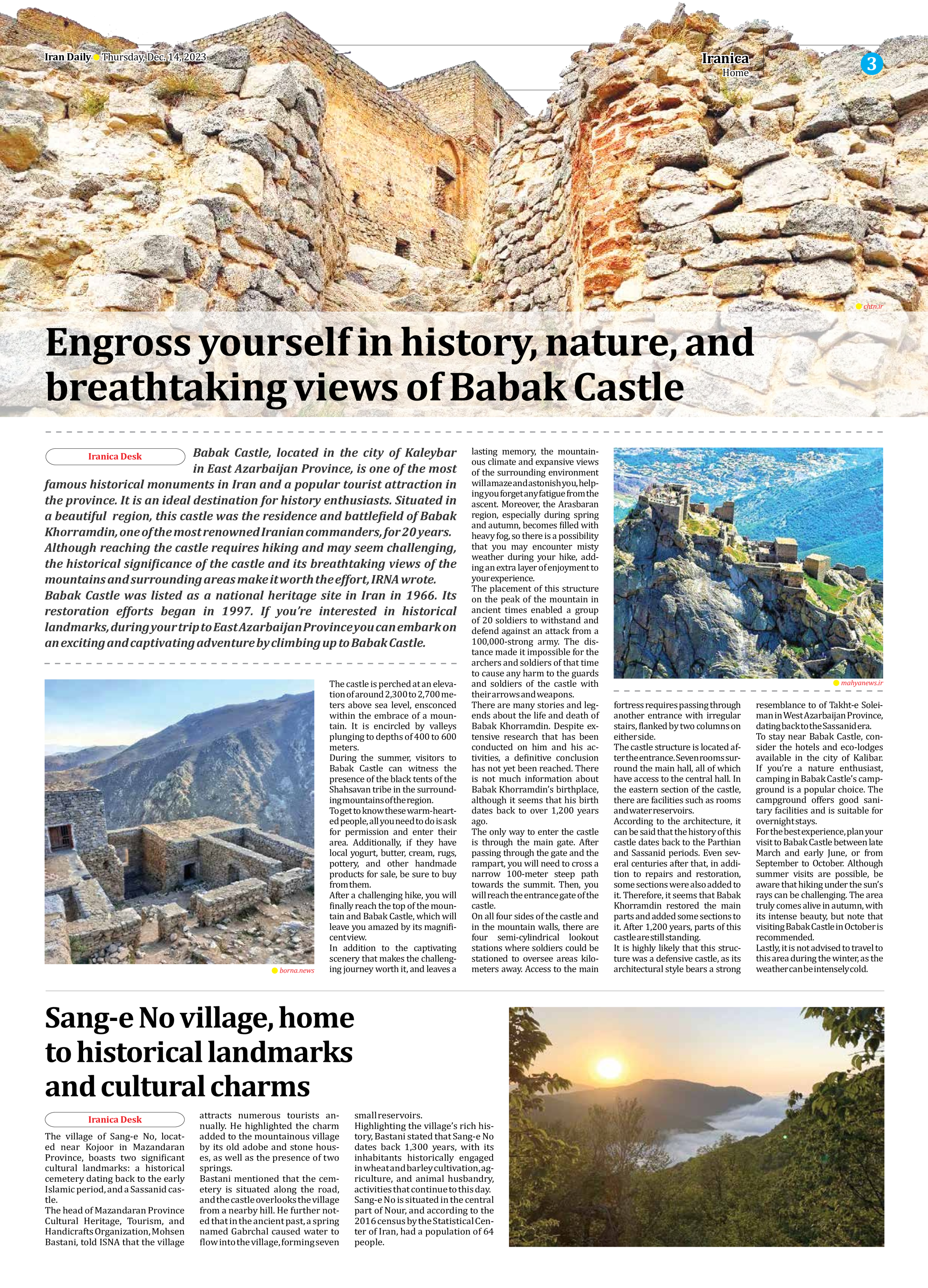
Sang-e No village, home to historical landmarks and cultural charms
The village of Sang-e No, located near Kojoor in Mazandaran Province, boasts two significant cultural landmarks: a historical cemetery dating back to the early Islamic period, and a Sassanid castle.
The head of Mazandaran Province Cultural Heritage, Tourism, and Handicrafts Organization, Mohsen Bastani, told ISNA that the village attracts numerous tourists annually. He highlighted the charm added to the mountainous village by its old adobe and stone houses, as well as the presence of two springs.
Bastani mentioned that the cemetery is situated along the road, and the castle overlooks the village from a nearby hill. He further noted that in the ancient past, a spring named Gabrchal caused water to flow into the village, forming seven small reservoirs.
Highlighting the village’s rich history, Bastani stated that Sang-e No dates back 1,300 years, with its inhabitants historically engaged in wheat and barley cultivation, agriculture, and animal husbandry, activities that continue to this day.
Sang-e No is situated in the central part of Nour, and according to the 2016 census by the Statistical Center of Iran, had a population of 64 people.







